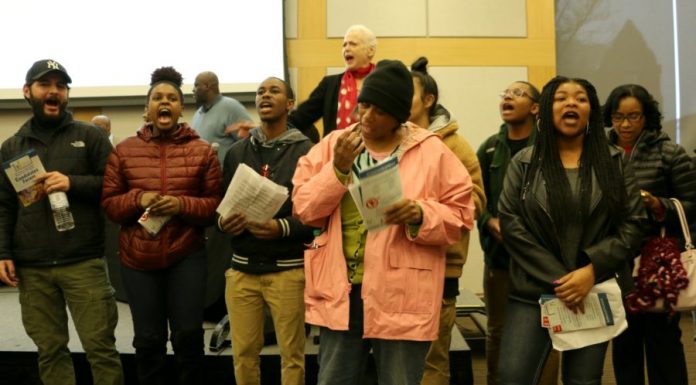By Tom Bergeron
The transportation infrastructure in Newark is extensive — and certainly greater than any other location in the state. New Jersey Transit, Amtrak and the PATH all go through Newark Penn Station. And then there’s the fact that the city has the state’s largest bus depot — not to mention numerous roads for those who want to drive in for work.
All of this was mentioned last week during a panel discussion, “Rising, the Newark Office Market Story,” which was sponsored by CBRE.
And, while all of this has helped Newark’s rise as an office destination, it doesn’t illustrate what the panelists said is the city’s best transportation asset moving forward: The fact that it is ahead of the curve when it comes to the expected explosion of the use of driverless cars and ride-sharing.
So said Jeremy Neuer, a CBRE senior vice president.
“The city is really poised for transformation from a transportation perspective,” he said.
“The city is poised to really change, more than any of other markets, when you talk about driverless cars or ride-sharing, Uber(and) Lyft. I think Uber’s stats say 75 percent of all rides start or stop at a mode of transportation.”
That fact has big impact, Neuer said.
“If we keep going in that direction, parking will become less of an issue, cost of parking will become less of an issue,” he said. “People will come here in different ways. We’ll see people using an Uber pool coming from the suburbs not worrying about where to park and how much it’s going to cost — and, once you take the driver out of Uber, the cost goes down.”
Jeff Babikian, an executive vice president at CBRE, said he is seeing businesses preparing for this trend.
“All (developers) are conceptualizing drop-offs,” he said. “It used to be executive limo drop-off areas, now it’s Uber drop-offs in front of these office buildings.
“It’s not here, but it’s just about here.”
Babikian said Newark has an advantage over other cities because so much of the city is being redeveloped and is not locked into real estate, as is the case in many other big cities.
It’s just one of the transportation advantages he said he sees the city as having.
The bigger one right now? Being able to draw from such a large group of potential employees — and giving them the ability to either drive in or take public transportation.
“If you look at concentric circles and ask, ‘When do I lose my employees — how far will somebody drive to work?’ The answer really is, ‘If you want to be in New Jersey, anything over 40 minutes, you’re going to lose them,’” he said.
“The ability to drive and take the train was attractive on two levels. (Newark is) one of the few markets in the state where you can park and still rely on mass transportation. There’s really nowhere else in the state that has the type of setup, other than maybe MetroPark.”
Babikian said companies are recognizing that this ability allows Newark to draw millennials who may want to live in the more trendy areas of Hoboken and Jersey City, too.
“It allows (companies) to say, ‘I’ll minimize my attrition if I move here, but, more importantly, I’ll be able to attract (the next generation),” he said.
Neuer said Newark’s transportation infrastructure also is beneficial to millennials who choose to live in Newark and work in New York City for the simple reason that the PATH starts in Newark.
“If you live in Jersey City and try to get on the PATH train to go to New York City, sometimes two, three, four PATH trains have to pass by before you can actually get into the door,” he said. “If you live in Harrison and Newark, you don’t have to wait because this is where PATH starts. Newark doesn’t have that problem. You can get on the PATH and get a seat.”
Aisha Glover, the CEO and president of the Newark Community Economic Development Corp., agreed with all of the above.
But then said she’s hoping for more.
Glover said she’s excited about the influx of residential properties coming to the city — more than 1,500 units have come on line in the past five years and approximately the same amount is in the pipeline — and feels this housing will help Newark create the work-live-play environment it’s desires.
“That thinking of, ‘How do we continue to just get people into Manhattan?’ is finally turning a corner where the desire to live and work in the same place is undeniable,” she said. “If we can … continue to create this environment in the city of Newark, some of those concerns of, ‘Will I be able to make this train?’ actually won’t even matter.
“We have more and more corporations coming into Newark and we have this live-work environment with more and more amenities coming into the picture, where finally, we’ll be able to create that kind of all-inclusive environment that we want right here in the city.”













